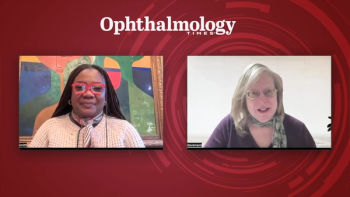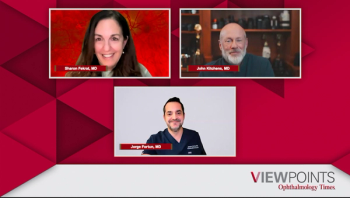
Introducing iOpeners: Unpacking high-yield ophthalmology tips and clinical pearls, with Nicole Bajic, MD

In episode 1, Bill Trattler, MD, shares practical advice on documentation, patient communication, keratoconus management, and advanced lens technology.
In this inaugural episode of iOpeners, host Nicole Bajic, MD, a comprehensive ophthalmologist at the Cole Eye Institute in Cleveland, Ohio, speaks with Bill Trattler, MD, a refractive, corneal, and cataract eye surgeon at the Center For Excellence In Eye Care, in Miami, Florida. This Ophthalmology Times video interview series is designed to deliver brief yet impactful episodes that spotlight clinical pearls and expert insights on the hottest topics in ophthalmology today. Recorded onsite at the American Society of Cataract and Refractive Surgery 2025 conference, the discussion carries the ambient energy of the meeting.
The conversation begins with a focus on documentation and risk mitigation, a topic that can be intimidating even for experienced ophthalmologists. Bajic framed the discussion around scenarios in which physicians adhere to standard of care yet still encounter legal challenges due to documentation oversights. Trattler emphasized, “First of all, anytime you’re in a complicated case and there’s a complication, just do your very best in that case to really be careful how you document.” He advises clinicians to capture key observations, including pertinent negatives, which, though seemingly simple, can be critical in the event of litigation.
Equally important, Trattler underscored the role of patient communication in reducing stress and potential legal exposure. He noted, “A lot of times, patients feel abandoned or disappointed because they feel that the doctor-patient relationship isn't really there.” To bridge this gap, he shares a practical approach: providing patients with direct contact information and encouraging open dialogue. This proactive communication, coupled with careful documentation, strengthens the physician-patient relationship and helps ensure that complications, which sometimes occur despite best efforts, are handled with transparency and empathy. He added a crucial caveat about post-event charting: “Don’t go back and touch the records that look like maybe you’re guilty about something, so it’s better not to do that.”
Bajic reflected on the patient relationship side of complications, noting, “Those are great points. It's so important that when something comes up that was unexpected, there's a bump in the road, that you have to show the patient extra love. They need to know that you're there with them.”
Transitioning to clinical management, the discussion turns to keratoconus and the timing of cross-linking procedures. Trattler shared findings from a registry examining patients who experienced delays before treatment. Contrary to common teaching that keratoconus stabilizes after age 40, he notes that older patients can still progress. In a subgroup analysis of 105 patients over 40, 38.7% demonstrated disease progression, compared with approximately 42% of younger patients. Trattler advised vigilance: “Even if we’re stable for a couple of years, you’re not permanent.” He illustrated this with a case of a patient stable for 9 years who eventually required cross-linking in her early 60s, highlighting the importance of ongoing monitoring regardless of patient age.
The conversation then shifts to advanced lens technologies and patient selection. Trattler emphasized the importance of preoperative measurements, careful assessment of ocular surface disease, and individualized decision-making to optimize outcomes. He explains, “I look very carefully at the topography.” For patients with epithelial basement membrane dystrophy, he tailors treatment based on severity, performing epithelial debridements if necessary and allowing sufficient healing time to stabilize measurements before surgery.
Trattler shared his current experience with 3 advanced lens technologies: the Envy (Bausch + Lomb), the PanOptix Pro (Alcon), and the Odyssey (Johnson & Johnson Vision). Although a brief voluntary recall temporarily impacted availability of the Envy lens, he noted that the PanOptix Pro has been performing well and emphasizes the ongoing process of determining the best lens for each patient. He summarized, “We're really excited to learn and say that these technologies are the best we’ve ever had for our patients.”
Newsletter
Don’t miss out—get Ophthalmology Times updates on the latest clinical advancements and expert interviews, straight to your inbox.




